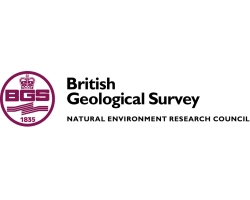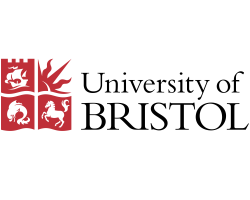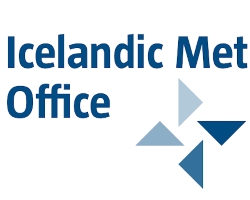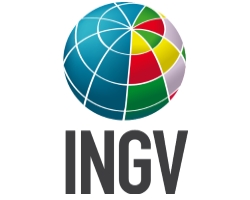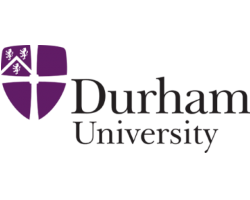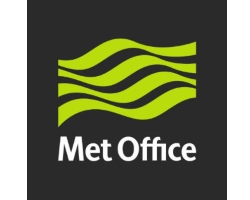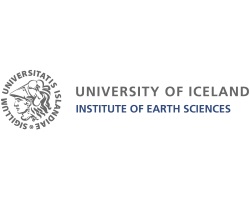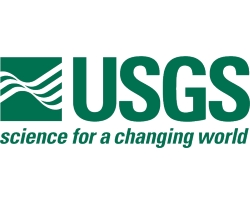 The core aim of the NERC-NSF DisEqm project is to create an empirically-constrained quantitative understanding of disequilibrium processes in basaltic volcanism, and to apply this to address key volcanological problems through a new numerical modelling framework.
The core aim of the NERC-NSF DisEqm project is to create an empirically-constrained quantitative understanding of disequilibrium processes in basaltic volcanism, and to apply this to address key volcanological problems through a new numerical modelling framework.
Basaltic volcanism is the most common form of volcanism in the solar system. On Earth, eruptions can impact global and regional climate, and threaten populations living in their shadow, through a combination of ash, gas and lava emissions. The specific risk to the UK from an Icelandic eruption is recognized as one of the four ‘highest priority risks’ in the National Risk Register of Civil Emergencies.
The impact of an eruption is determined by both intensity and style, ranging from explosive and ash-rich (impacting on air-space access and climate) to effusive and gas-rich (affecting climate, public health and crops/livestock locally and distally). Understanding these eruptive styles, and their evolution in time and space is key to forecasting the impacts of eruptions.

About the project
We have a series of aims and methodologies that we will apply in order to advance our scientific understanding of basaltic volcanism.
Overview
We bring together a world-leading team to perform experiments using new, ground-breaking synchroton X-ray imaging and rheometric techniques to visualise and quantify crystallisation, degassing and multiphase, HPHT (high-pressure, high-temperature) viscosity evolution, revolutionising the fields of experimental petrology and HPHT rheometry. We will perform large scale fluid dynamics simulations to inform and test the 3D numerical modelling, and we will constrain fragmentation and eruption column processes with empirical field studies.
Results will be integrated into a state-of-the-art numerical model, and applied to impact-focussed case studies for Icelandic, US and Italian basaltic eruptions. In conclusion, our project will produce a paradigm shift in our understanding of disequilibrium processes during magma ascent and our capacity for modelling basaltic eruption phenomena, creating a step-change in our ability to forecast and quantify the impacts of basaltic eruptions.
Objectives
The main aim of the DisEqm project are to improve our understanding of kinetically-limited crystal growth and gas exsolution during ascent of baslatic magma. In order to achieve this aim, we have defined a series of objectives, which describe the methodologies that we will apply in order to advance our scientific understanding of baslatic volcanism and the impact of the DisEqm project
- Develop and apply 4D in-situ X-ray tomography of HPHT experiments to quantify the equilibrium and disequilibrium crystallisation and degassing behaviour of natural basaltic melt
- Develop new HPHT apparatus for direct rheometry of basaltic melts
- Build scaled analogue models to examine multiphase fluid flow in a fissure system
- Create a tested, physically-based numerical model for disequilibrium ascent and eruption of basaltic magma, starting in 1D and extending to 3D using the OpenFOAM framework
Apply the model to examine questions regarding:
- What allows basaltic systems to produce a wide range of eruption styles and scales?
- What role do disequilibrium processes play in this diversity?
- Why do individual volcanoes exhibit a wide range of eruptive behaviour, often changing style and scale over short timescales?
- What conditions lead to highly explosive basaltic eruptions such as the subplinian Sunset Crater eruption, among others?
- How can we better interpret surface gas composition and flux measurements in terms of subsurface magma dynamics?
In collaboration with the Steering Committee, we will define future scenarios for Icelandic, Italian and continental US eruptions, and run the DisEqm model to produce eruption source parameters for each scenario. We will encourage the adoption of models arising from DisEqm for use during volcanic crises.

Publications and presentations
There are number of project research outputs and presentations associated with the project.
- See our list of publications.
Presentations and posters
Presentations
Tracing magma degassing using experimental approaches.
Le Gall N., Pichavant M., Burton M.R., Lee P.D. 12 Dec 2016. Goldschmidt August 2018, Boston, USA (invited).
Non equilibrium degassing of ascending basalt.
Le Gall N., Pichavant M., Burton M.R., Lee P.D. January 2018, The University of Oxford, UK (invited).
The role of sulfides in controlling volcanic SO2 emissions from Icelandic eruptions: a textural approach.
Hartley M., Liu E., Edmonds M., Arzilli F., Polacci M., Bell S., Le Gall N., Ilyinskaya E., Burton M.R., Drakopoulos M., Vo N IAVCEI August 2017, Portland, USA.
4D crystallisation in basaltic magmas.
Polacci M., Arzilli F., Le Gall N., La Spina G., Cai B., Hartley M., Di Genova D., Vo N., Nonni S., Llewellin E.W., Atwood R.C., Lee P.D. and Burton M.R. IAVCEI August 2017, Portland, USA.
Illuminating magma shearing processes via synchrotron imaging.
Lavallée Y., Cai B., Coats R., Kendrick J.E., von Aulock F., Wallace P.A., Le Gall N., Godinho J., Dobson K., Atwood R.C., Holness M., Lee P.D. EGU April 2017, Vienna, Austria (invited).
Degassing of basaltic magma: decompression experiments and implications for interpreting the textures of volcanic rocks.
Le Gall N., Pichavant M., Cai B., Lee P.D., Burton M.R. EGU April 2017, Vienna, Austria (invited).
Posters
Rapid growth of plagioclase: implications for basaltic Plinian eruption.
Arzilli F. Polacci, M., La Spina, G., Le Gall, N., Cai, B., Hartley, M., Di Genova, D., Vo, N., Bamber, E., Nonni, S., Atwood, R.C., Llewellin, E., Lee P.D., Burton, M. EGU April 2018, Vienna, Austria.
Development of a rig for the in situ synchrotron X-ray imaging of the nucleation and growth of bubbles and crystals in basaltic magmas.
Le Gall N., Cai B., Arzilli F., Atwood R.C., Marussi S., Nonni S., Rockett P., Brooker R., Lee P.D. EUROMAT September 2017, Thessaloniki, Greece.
Time-resolved synchrotron tomography of basaltic magmas: successes and challenges.
Le Gall N., Arzilli F., Cai B., Atwood R.C., Rockett P., Nonni S., Marussi S., Brooker R., Polacci M., Burton M.R., Lee P.D. IAVCEI August 2017, Portland, USA
A history of vesicles and crystals in volcanic rocks in 3 and 4 dimensions.
Polacci M. EGU April 2017, Vienna, Austria

The team
We have multi-institutional members who form our team and a project steering committee comprising of international stakeholders.
Group members
Fabio Arzilli
- University of Manchester
Department of Earth and Environmental Sciences
PDRA working on Petrological experiments, 3D reconstructions and HPHT apparatus development
Read bio
Richard Brooker
- University of Bristol
School of Earth Sciences
Petrological experiments and HPHT apparatus development
Mike Burton
- University of Manchester
Department of Earth and Environmental Sciences
Project coordinator and leading eruption scenario impact assessments
Read bio
Biao Cai
- University of Manchester
Department of Materials/Harwell
PDRA working on 4D X-ray experiments
Antonio Capponi
- Durham University
Dept. Earth Sciences
PDRA working on analogue experiments
Amanda Clarke
- Arizona State University
SESE
Leader of eruption column modelling and field testing
Danilo Di Genova
- University of Bristol
School of Earth Sciences
PDRA working on HPHT rheometer development
Margaret Hartley
- University of Manchester
Department of Earth and Environmental Sciences
Leader of petrology work package
See bio
Giuseppe La Spina
- University of Manchester
Department of Earth and Environmental Sciences
Leader of numerical modelling
See bio
Nolwenn Le Gall
- University College London
Dept. Mechanical Engineering
PDRA working on 4D X-ray experiments and petrology
Peter Lee
- University College London
Dept. Mechanical Engineering
Leader of 4D X-ray work package
Ed Llewellin
- Durham University
Dept. Earth Sciences
Leader of analogue modelling work package
John Maclennan
- University of Cambridge
Dept. Earth Sciences
Petrological analysis and Icelandic field studies
Heidy Mader
- University of Bristol
School of Earth Sciences
Leader of HPHT rheometer development
Margherita Polacci
- University of Manchester
Department of Earth and Environmental Sciences
Leader of 4D image analysis
Read bio
Kurt Roggensack
- Arizona State University
SESE
Petrological analysis and sunset crater studies
Sara Nonni
- University of Manchester
Materials/Harwell
PDRA working on 4D x-ray experiments
Read bio
Peter Rockett
- University of Oxford
Engineering Consultant on 4D x-ray experimental rig design
Steering committee
The Steering Committee has the purpose of oversight of the DisEqm project, guaranteeing that the focus remains clear on the main impact-focused goals of the project from start to finish. It’s members represent key stakeholders in European and US Volcanology.
- Sara Barsotti – Icelandic Metereological Office
- Mattia de’Michieli Vitturi – Istituto Nazionale di Geofisica e Vulcanologia, Pisa Italy
- Hans Schwaiger – Alaska Vocano Observatory
- Daniela Ehgartner – Anton Paar
- Thor Thordarson – University of Iceland
- Claire Witham – UK Met Office

